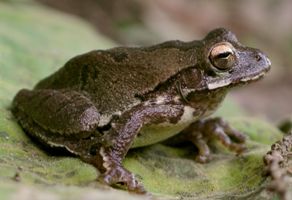


A Mexican Tree Frog, the gorgeous Green Jay, and a gap in the 20' high Border Fence
When people ask about the best season to come to Austin to see butterflies, they are sometimes taken aback when the answer is October. We do have freezes in the winter, so only those species that are adapted to the cold can survive here year 'round. However, just a few hundred miles south the chance of such low temperatures is almost nonexistent. When it comes to butterflies, species diversification explodes in the tropics. During the warm months of summer, many of those very mobile insects wander about, sometimes ending up far from their core habitat. If they have fairly short life cycles, they might even temporarily breed farther north than usual. So, by the beginning of autumn, there is a chance of seeing a wide range of both local bugs and exotic strays.



Since Texas is a big state, it certainly provides plenty of far-flung destinations within its borders. In a way, this vast area is a deterrent to travel because it seems to take FOREVER just to get beyond the state's border into somewhere new. But some of those borders are very unique places, at least in the U.S.
One of the most distinctive locations is the southern tip of Texas, in the lower Rio Grande valley. The area around the Rio Grande is not really a valley, but more of a floodplain. The river moves rather slowly through fairly level terrain, twisting and turning into a variety of oxbows that shift with each major flood. Because of heavy agricultural use (the climate being quite suitable for growing crops like citrus), much of the forested areas are secondary growth, and there is a mix of open scrub, grasslands, palm forest and cultivated fields.
I have only traveled to the Valley twice (not counting a gig with the Laredo Symphony many years ago), but, from a nature photographer's perspective, it is a very striking area. Both of my trips were for only a couple of days and they took place just before Thanksgiving in 2014 and 2015. My traveling companions were professional entomologists, interested in lepidoptera (moths, butterflies and their caterpillars). We spent most of our time in Brownsville, at the Sabal Palm Sanctuary and the Nature Conservancy's Southmost Preserve, right along the Rio Grande. Both of these areas are south of the Border Fence, but there are large openings in that barrier to accommodate the gravel entrance roads.
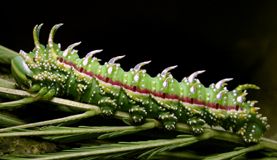
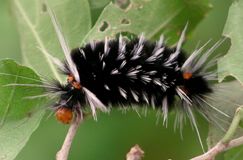

Besides the oddly surreal looking fence, the constant border patrols, and the unassuming little Rio Grande, the defining feature of this area is the biota. Nowhere else in this country can you find plants and animals that are so, well, Mexican. It is like taking a trip to the tropics without having to obtain a passport.
It's true that many of the species encountered are the same as we have 350 miles to the north in Travis County. But there is a substantial set of southern animals that will be found only down in Cameron and Hidalgo Counties. Those colorful, exotic denizens give us detail-oriented folks a thrill.
The most mainstream nature-related activity in the Valley is bird watching. Any number of Mexican species might fly across the river and become the highlight of the year's life-list entries for the lucky birders who see them. The butterfly enthusiasts are just as passionate. Many inns, parks and preserves along the border have carefully cultivated flower gardens to encourage nectar-seeking insects. Even though my visits corresponded to cool weather and were well after the peak butterfly season, I still saw a few of the southern specialties for which the region is famous.
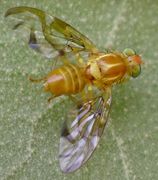

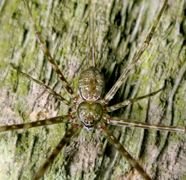

Besides butterflies, which are highly visible and therefore popular subjects for observation and photography, there are plenty of other insects that are equally intriguing. There are even some unusual spiders. One of the surprises that I found while checking mercury vapor lights (an efficient way to attract moths and other nocturnal insects) in old growth palm forest was the Mexican two-tailed spider (hersiliidae: Neotama mexicana). While walking on the narrow paths, my flashlight beam often caught these large, long-legged spiders perched on almost every large palm trunk. It was most common for a female to be motionless, head down, about two feet off the ground, with a male another few inches above her. The spiders stayed still while I shined a light on them, but if I got too close, I would accidentally touch their one leg that was held up over their body, which alerted them to danger. They would disappear almost instantly. It looked like magic, but was really just very rapid movement around to the other side of the tree. Though having such long legs, the spiders managed to move faster than expected.
Another curious find was the Mexican fruit fly (tephritidae: Anastrepha ludens). This is a major pest of various fruit trees, especially grapefruit. It occurs naturally in the area and is, unfortunately, encouraged by the types of crops grown by local farmers. This fly is certainly common and I had no trouble photographing some. The female has a long ovipositor (back end tube for laying eggs) that the male obviously lacks. I noticed, though, that the males I photographed had a stunning neon orange-red spot on their faces. I happened to read that this isn't their natural coloration; it is a mark that they were raised and irradiated to be sterile by a government facility in Mission, TX, for the sole purpose of keeping the population low. During the season when the flies are most active, millions of sterile males are released each week which, because they overwhelm the few fertile males in the area, keep females from laying viable eggs. This all works to prevent major infestations from becoming established in the U.S.
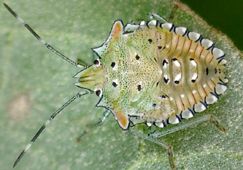
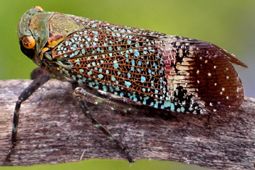
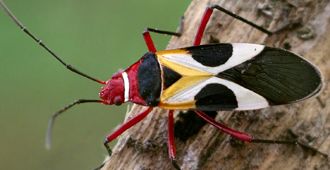
Only a small percentage of insect species are agricultural pests, and the majority are simply part of the ecosystem. Some of the tropical hemipterans (planthoppers, stink bugs, and such) are so colorful that they look like painted insect replicas. A number of caterpillars are adorned with crazy projections, gaudy colors and poisonous spines. One of my favorite creatures is the unlikely looking Texas Unicorn Mantis (mantidae: Phyllovates chlorophaea). Yes, it really has a spike sticking out of its forehead!
I'm not a particularly enthusiastic traveler, as the rewards often do not compensate adequately for the amount of time, money and effort spent to get there. But it's not always necessary to travel to another continent to find unusual places. The lower edge of our own nation is bordered only by a relatively narrow river - not much of a barrier to thousands of species of animals that make the lower latitudes their home. It's almost like another country.